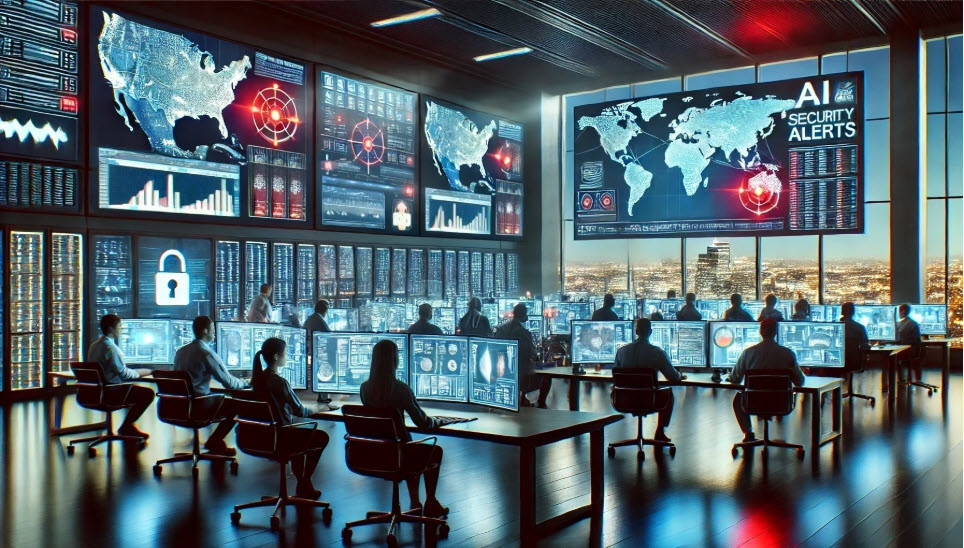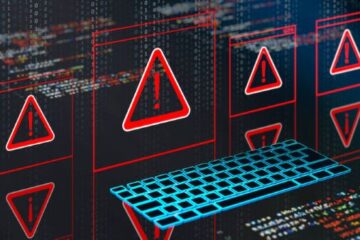Join our daily and weekly newsletters for the latest updates and exclusive content on industry-leading AI coverage. Learn More
As security operations center (SOC) teams struggle with mounting alert volumes, CrowdStrike is introducing Charlotte AI Detection Triage, which automates alert assessment with over 98% accuracy and cuts manual triage by more than 40 hours per week, all without losing control or precision.
“We couldn’t have done this without our Falcon Complete team,” Elia Zaitsev, CTO at CrowdStrike, told VentureBeat. “They do triage as part of their workflow, manually handling millions of detections. That high-quality, human-annotated dataset is what made over 98% accuracy possible.”
He continued: “We recognized that adversaries are increasingly leveraging AI to accelerate attacks. With Charlotte AI, we’re giving defenders an equal footing — amplifying their efficiency and ensuring they can keep pace with attackers in real-time.”
How Charlotte AI Detection Triage brings greater scale and speed to SOCs
SOC teams are in a race against time every day, especially when it comes to containing breakout times. CrowdStrike’s recent global threat report found that adversaries now break out within 2 minutes and 7 seconds after gaining initial access.
Core to Charlotte AI Detection Triage’s architectural goals is automating SOC triage and reducing manual workloads while maintaining over 98% accuracy in threat assessment. CrowdStrike reports this accuracy figure based on continuous real-world data from the Falcon Complete environment, which processes millions of triage decisions monthly.
Designed to integrate into existing security workflows and continuously adapt to evolving threats, the platform enables SOC teams to operate more efficiently and respond to critical incidents faster.
Key features include:
Autonomous triage and low-risk alert closure: Filters out false positives and closes low-risk alerts, allowing analysts to focus on genuine threats. This process reduces noise and enables SOC teams to prioritize high-impact incidents while minimizing alert fatigue.
Falcon Fusion integration for automated response. Incorporates CrowdStrike’s security orchestration, automation and response (SOAR) platform to streamline detection triage and automate response workflows. These are based on confidence thresholds and reduce mean time to respond (MTTR) and ensures analysts receive only the most relevant, high-fidelity detections.
“In earlier AI iterations, an analyst had to invoke Charlotte manually,” Elia Zaitsev, CTO at CrowdStrike, told VentureBeat. “Now, through Fusion, it can run autonomously — triaging thousands of alerts automatically and even triggering responses when confidence is high. That scale is what excites me most.”
Continuous learning from the industry’s largest SOC dataset: By continuously learning from millions of expert-labeled triage decisions within Falcon Complete, Charlotte AI Detection Triage adapts to emerging attack techniques in real time. Unlike generic AI models, which rely on static datasets, it refines its precision based on real-world SOC data, ensuring accuracy even as adversaries evolve their tactics.
“What actually has me more excited is that [our customers] can hook it up into the automation of the platform and just have it triage automatically all the detections,” said Zaitsev. “Not just triage all the detections, but we can take the output using Fusion and use that to drive additional decision making.”
CrowdStrike unleashes “deploying the droids” multi-AI architecture on SOC challenges
The nature of threats a SOC faces is changing faster than many manual approaches can keep up with, at times overwhelming automated systems. The growing challenges of high alert volumes and resource constraints are turning out to be a compelling use case for deploying multiple specialized AI agents.
CrowdStrike refers to its multi-AI architecture as a “deploying the droids” approach, where each specialized agent or “droid” is trained for specific tasks. Instead of relying on a single AI model, Charlotte AI coordinates multiple specialized AI agents, each trained for particular tasks. These AI agents work together to analyze, interpret and respond to security incidents, improving accuracy and reducing the burden on analysts.
As Marian Radu of CrowdStrike details in Deploying the droids: Optimizing Charlotte AI’s performance with a multi-AI architecture, this system integrates advancements in generative AI research, CrowdStrike’s extensive threat intelligence dataset and cross-domain telemetry that includes over a decade of expertly labeled security data. By dynamically selecting the best series of AI agents for each task, Charlotte AI improves threat detection and response, reducing false positives and streamlining SOC workflows.
The diagram below illustrates how Charlotte AI’s task-specific AI agents operate, breaking down each step in the process. This structured, AI-driven approach allows SOC teams to work more efficiently without sacrificing accuracy or control.

Charlotte AI processes user queries through a coordinated system of specialized AI agents.
Unlocking the Power of Agentic AI in SOC Security
Imagine a world where every agent in your SOC team is empowered with a unique role, seamlessly working together to provide accurate and efficient responses. From entity enrichment to answer planning, validation, and summarization, each agent plays a vital part in ensuring the security of your organization.
Recent insights from CrowdStrike’s State of AI in Cybersecurity Survey shed light on the growing importance of AI in SOC security. With over 1,000 cybersecurity professionals interviewed, the survey reveals key drivers of AI adoption in security operations.
Here are some key takeaways:
- Platform-first approach: 80% of respondents prefer AI integrated into cybersecurity platforms rather than as standalone tools.
- Specialized AI for security: 76% believe AI should be purpose-built for cybersecurity, leveraging deep security expertise.
- AI-driven automation: 74% of respondents have faced breaches or fear vulnerability, highlighting the need for AI-driven security automation.
- Focus on ROI: CISOs prioritize AI solutions that improve detection and response times, focusing on measurable outcomes over cost.
- Emphasis on security and governance: Clear safety, privacy, and governance structures are crucial for successful AI adoption in cybersecurity.
According to the report, security teams are seeking AI tools designed by cybersecurity experts, with a focus on tangible outcomes like faster response times, enhanced decision-making, and measurable ROI.
Ensuring Responsible AI Adoption with CrowdStrike
Security leaders are increasingly implementing policies to govern AI adoption, driven by concerns about data exposure and adversarial attacks. CrowdStrike’s survey reveals that 87% of security leaders are actively developing strategies to address these challenges.
One area of focus is Charlotte AI Detection Triage, which leverages AI to automate SOC workflows at scale. In a blog post titled Five Questions Security Teams Need to Ask to Use Generative AI Responsibly, Mike Petronaci and Ted Driggs highlight the importance of addressing the risks associated with AI adoption.
CrowdStrike introduces the concept of “bounded autonomy” to give customers control over the level of authority AI has in triage and response. This approach allows organizations to tailor the use of AI based on their risk tolerance and skepticism levels.
By integrating Charlotte AI with automation systems, CrowdStrike enables customers to decide how and where they want automation to be implemented. This level of control ensures that security teams can leverage AI-driven triage effectively while maintaining necessary guardrails for responsible adoption.
Through continuous learning and adaptation to real-world SOC data, Charlotte AI Detection Triage enhances threat detection while reducing alert fatigue. With “bounded autonomy,” security teams can harness the efficiency of AI while ensuring responsible and effective adoption in their cybersecurity operations.



